Alaskan Husky vs Siberian Husky Photos – What’s The Difference?
The differences between the Alaskan and Siberian Huskies are drawn up from the different processes of breeding, grooming, and lifestyles they are exposed to.
One might say that Alaskan Huskies and Siberian Huskies are two different Huskies because of the continents on which they were bred or developed. While Siberian Huskies are bred in Russia, Alaskan Huskies are bred in Alaska. Besides their names and countries of breeding, other characteristics differentiate the Alaskan Husky from the Siberian Husky and make each one unique in its own way.
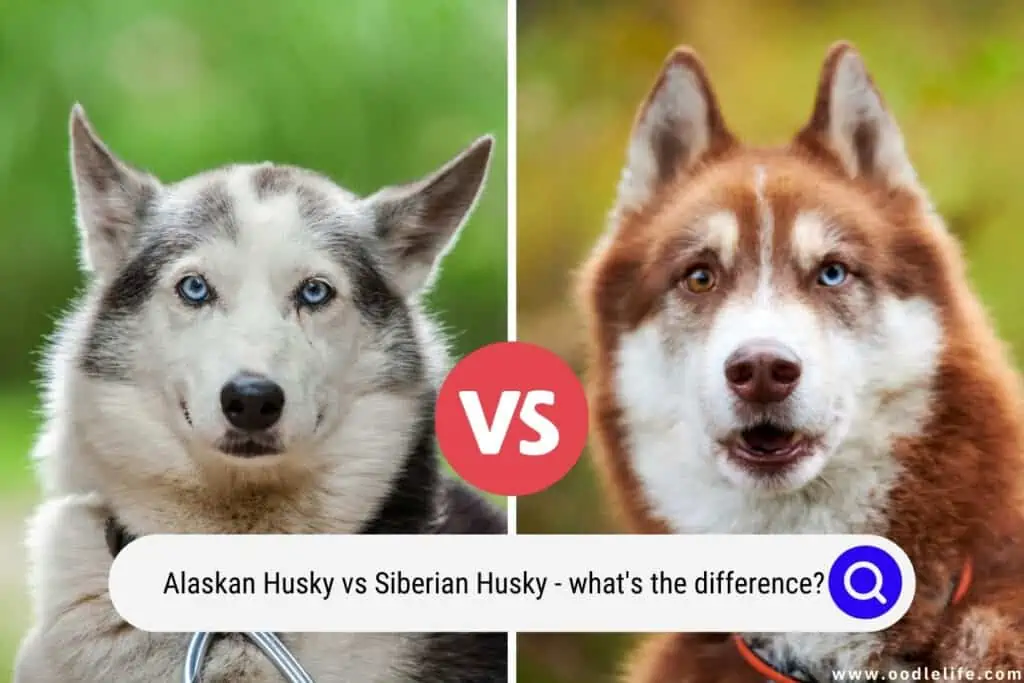
Although Alaskan Huskies are not considered, recognized, or registered as a distinct breed, their lineage can be traced to different breeds such as the Siberian Husky, Border Collie, Alaskan Malamute, and German Shepherd, among others. A Siberian Husky, on the other hand, is a distinct and registered breed of working dog primarily engaged in pulling sleds in the Northern tundra. And their ancestry can be traced to Siberia in Russia, specifically to the Spitz family.
Genetic Relationship Between Alaskan and Siberian Huskies
According to a study carried out in 2015 to ascertain the genetic relationship between Alaskan Huskies, Alaskan Malamute, and Siberian Huskies, Alaskan Huskies were genetically intermediate between Malamutes and Siberian Huskies.
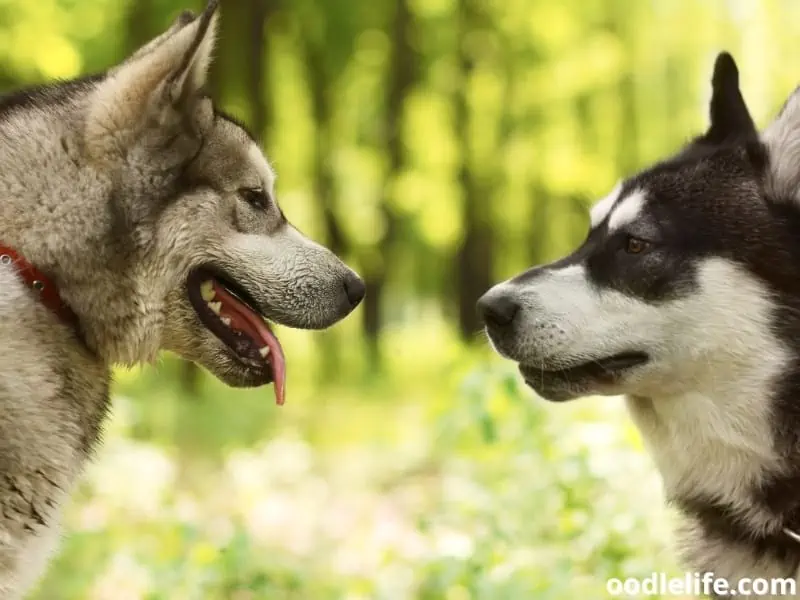
This genetic relationship is mostly because the Siberian Husky (which is an old Russian breed of dog) and Malamutes contributed to the creation of the Alaskan Husky. As a result, they share an undeniable DNA.
From the shared DNA between Alaskan Husky and Siberian Husky, the jaw-dropping physical similarities that sometimes get you confused about whether or not they are different, are not so far fetched.
On this note, if we were to assign a family title to the genetic relationship that exists between the Siberian and Alaskan Husky, we could say that they are half brothers.
Differences Between Alaskan Husky and Siberian Husky
It has been established that Alaskan and Siberian Huskies are different breeds in that they were developed in different countries.
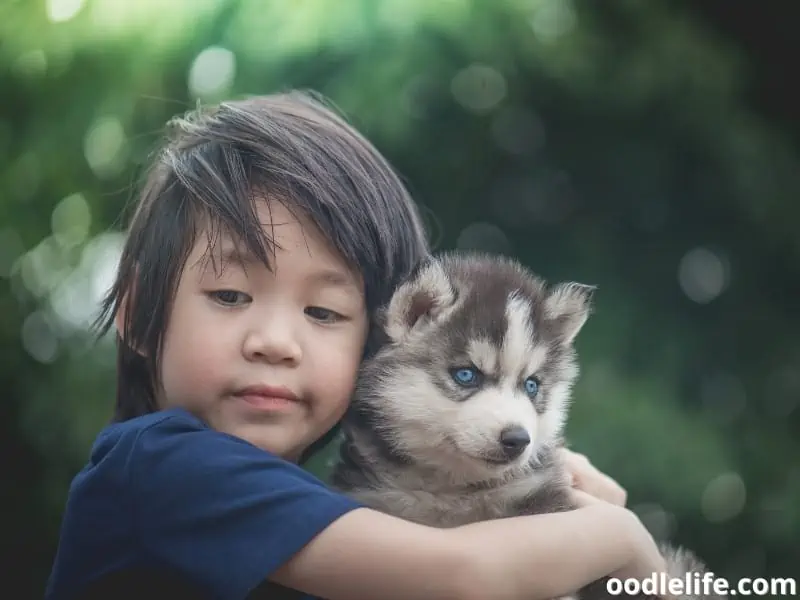
Nonetheless, the biggest difference between the two dogs is that Siberian Huskies, as would be examined in this article, are relatively shorter where their physical build is concerned.
In addition, Siberians are used for both work and show purposes. As opposed to this, Alaskan Huskies are used strictly for work and dog sled racing purposes.
Now let’s take a deep dive into these major distinctive features between Alaskan and Siberian Huskies.
Appearance
Before today, you’ve probably always thought that Alaskan and Siberian Huskies are the same, from their wolf-like looks, their energy, and even their last names. That assumption is quite inevitable.
Plus, they look so similar that you can barely tell the difference between the two sometimes. When people, or in this case, dogs, look similar to each other, one thing’s for sure: they are genetically related.
As a result, the genetic relationship that Siberian and Alaskan Huskies share largely accounts for the identical appearance they share.
Both Alaskan and Siberian Husky breeds are double-coated. Their thick coats keep them from the piercing cold in Siberia and Alaska, which happens to be one of the world’s coldest places.
Alaskan Husky
Alaskan Huskies have brown, blue, or blue-brown eyes. Their coats are either short or mid-length, as such, they do not require intensive grooming. Also, the average lifespan of an Alaskan Husky ranges between 12 and 15 years.
Alaskan Huskies were bred to be hard-working, back-burning sled dogs in the snow. They are strictly bred for work, more like workaholics.
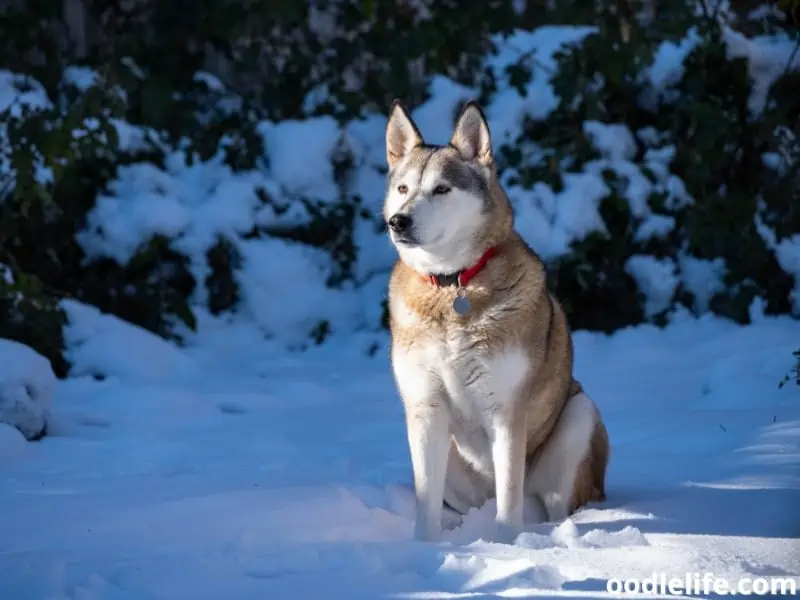
Siberian Husky
Siberians generally have different eye colors, ranging from ice blue, amber, and dark blue, to brown color eyes. Their life span ranges from 12-15 years. Nevertheless, one striking feature exclusively common to Siberian Huskies is a condition of the eyes called heterochromia.
This is an eye condition where the dog has different eye colors. The left eye could be amber and the right brown. Additionally, the Siberian Husky is usually about 21-23″ inches tall.
Siberian Huskies have a taller athletic heigsiht than Alaskan Huskies. They are usually around 23 to 26 inches tall. And we don’t mean the athletic height to run for the Olympics. But close enough to do their jobs as working dogs.
Siberians are bred and modified to produce a championship quality dog. They can pass for both working and companion dogs.
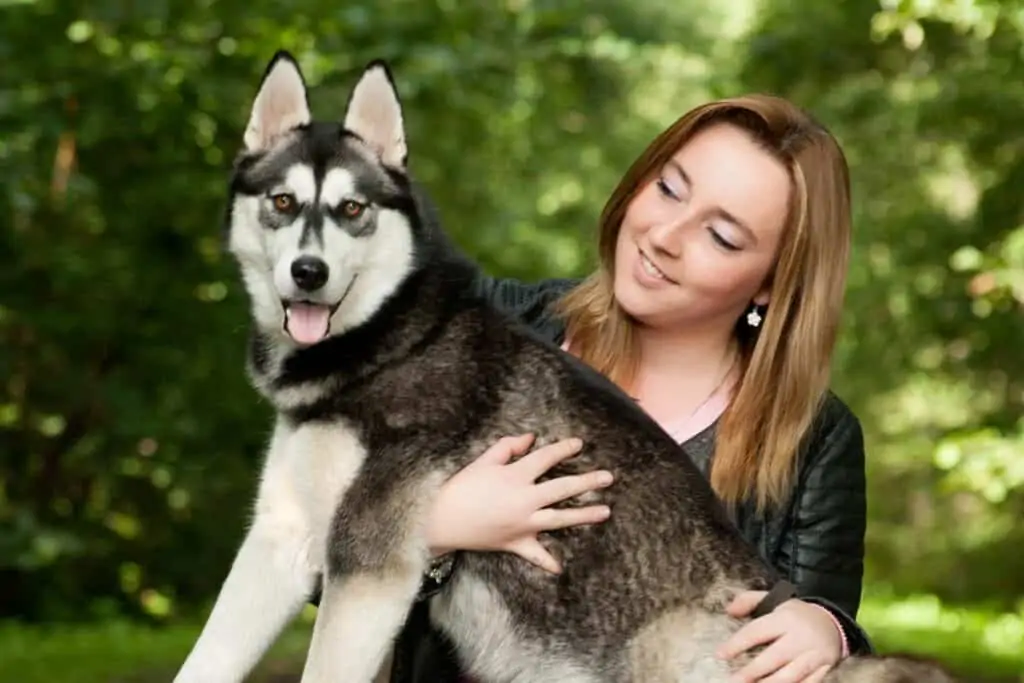
Temperament
You know, just because siblings are related by blood, doesn’t mean they will automatically have the same personality. Even identical twins rarely have the same behavioral patterns of reactions.
The same thing goes for Alaskan and Siberian Huskies. They might have similar traits, but they also have different temperaments that set them apart. This distinction can be attributed to the different breeding they’ve been put through.
Although Siberian Huskies were originally bred to be working and hunting dogs. Once they became a registered breed, they were subjected to much more scrutiny and fine-tuning.
On that note, the varied lifestyles that both dogs have been subjected to have greatly influenced their personalities. You don’t expect an Alaskan purely bred to be on the move, to be sober for long, unlike Siberians, who can still find the home setting very compatible. Let’s examine some of the distinctive temperaments of both brothers.
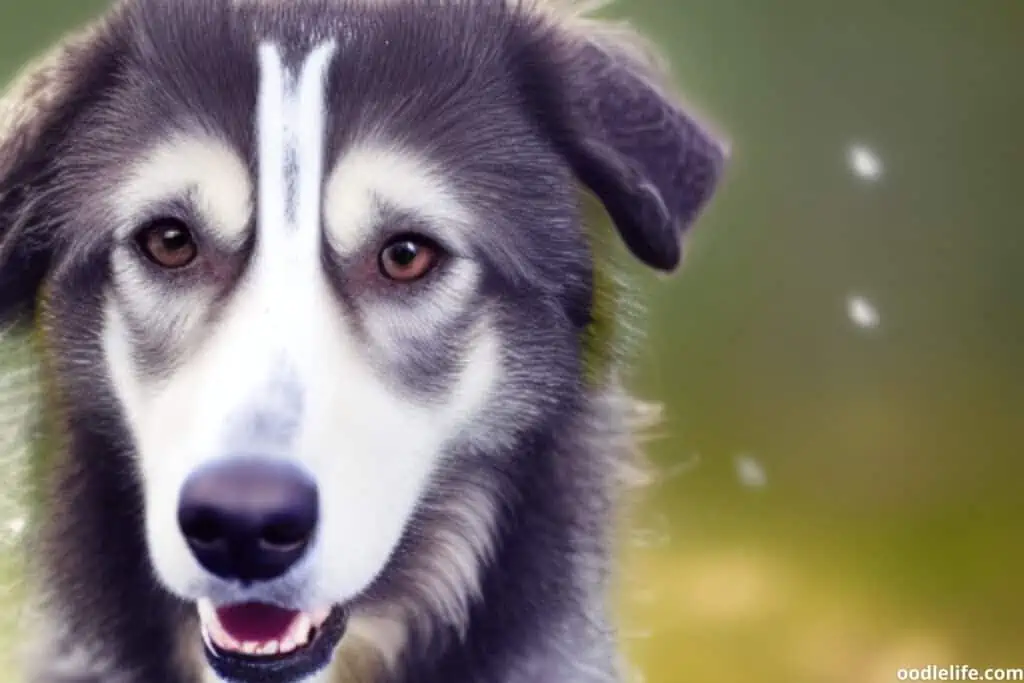
Alaskan Husky
Given the fact that Alaskan Huskies are bred to be sled dogs that can give you a fun ride in the snow, they are more extroverted than introverted. As such, Alaskan Huskies may not enjoy life inside the home. But that doesn’t mean you can’t have one as a pet.
It just means that if you decide to have an Alaskan Husky as a pet you need to be inclined to the fact that they require a lot of exercise and stimulation, to keep their minds and bodies in the best of health.
And you might need to make a lot of adjustments to their training.
You might also notice behavioral patterns like chasing after wildlife, jumping over fences, or digging under a fence as stealthily as a snail. They are gentle and they do pretty well with other dog breeds. But, they can be a piece of work when it comes to other household pets sometimes.
This is because of their predatory traits.
Alaskans can be on their best behavior if they are adequately stimulated. They are strong and generally playful and friendly like any other dog. But when bored and less engaged, they might become aggressive and obstructive.
You don’t want to mess with that. They always need something to do!
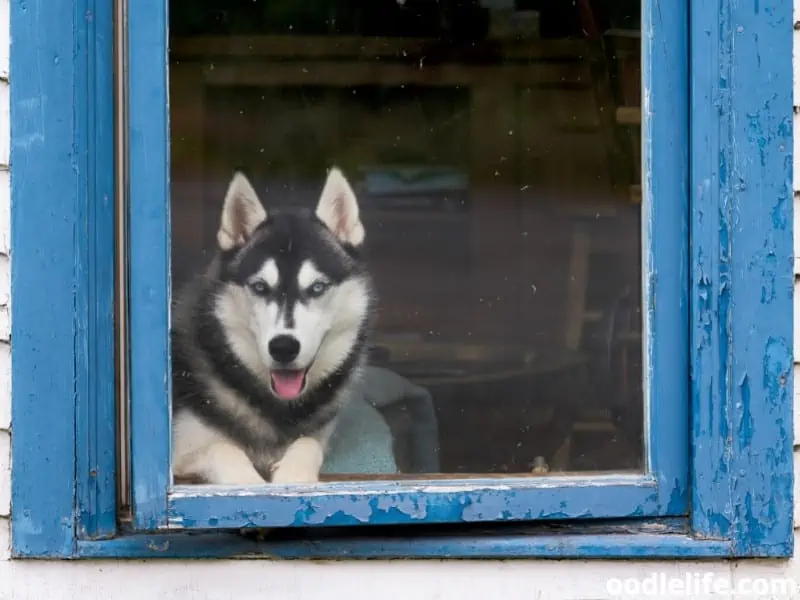
Siberian Husky
Like Alaskan Huskies, Siberian Huskies also require a few hours of daily exercise. As pure breeds, they’ve not been subjected to rigorous exercise like Alaskan dogs, who came to be from crossing Siberian breeds with high-endurance and high-speed breeds to produce superior sled dogs like Alaskan dogs.
Among the other qualities that accurately describe the temperament of Siberian Huskies are their friendly nature, intelligence, alertness, and gentle demeanor.
However, Siberian Huskies are all akin to chasing wildlife. The predatory trait that makes the Siberian also chase after wildlife or pets in your house pretty much runs in the blood of Huskies.
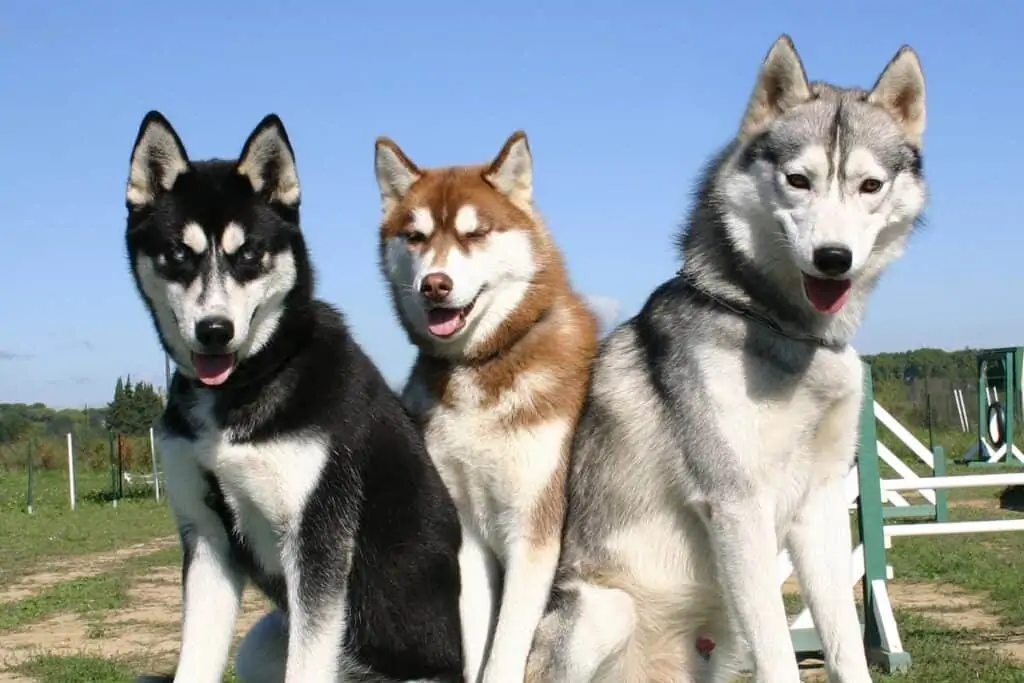
Size
Siberian Huskies are relatively large dogs, in this case, bigger compared to the Alaskan Husky. On average, Siberian Huskies can weigh up to 40-65 pounds, as opposed to Alaskan Huskies that typically weigh between 35 and 55 pounds.
For both types of dogs, however, the females are usually smaller and shorter than their male counterparts.
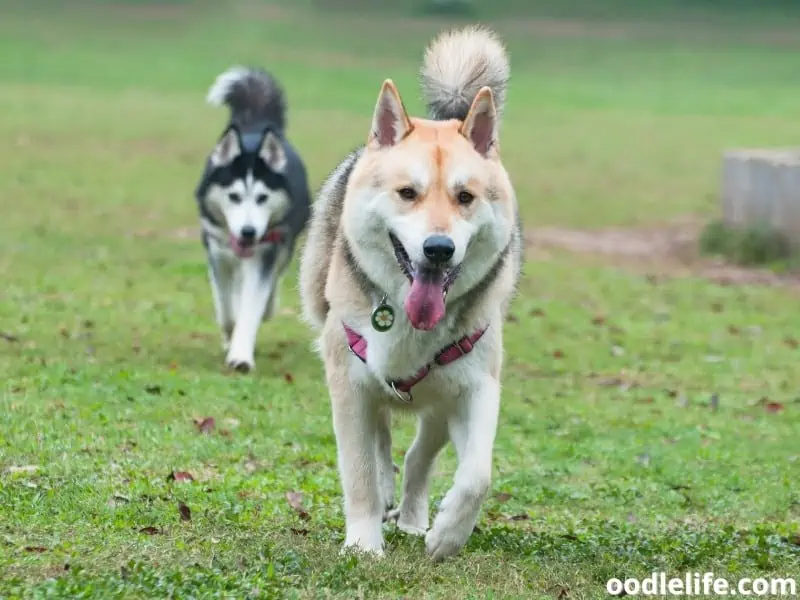
Coat
When we talk about a dog’s coat, you already know that we’re referring to the hair that covers the body of the dog and makes it less vulnerable to harsh climatic conditions. The length, color, pattern, or texture of a dog’s coat can vary between different dog breeds.
While both Huskies have double coats that help keep them warm in a cold climate, they may have different coat colors. Being mixed breeds and unregistered, Alaskan Huskies can be multicolored with various markings. The coat is also short or medium length and can be made shorter if they are bred to pull sleds.
On the contrary, the colors of the coat of a pure breed like the Siberian Husky are usually regulated by groups like the Kennel Club and the American Kennel Club (AKC). However, situations where Siberians also have any markings and color are rare in registered breeds. Also, the Siberians have a medium-length coat, longer than that of Alaskan Huskies.
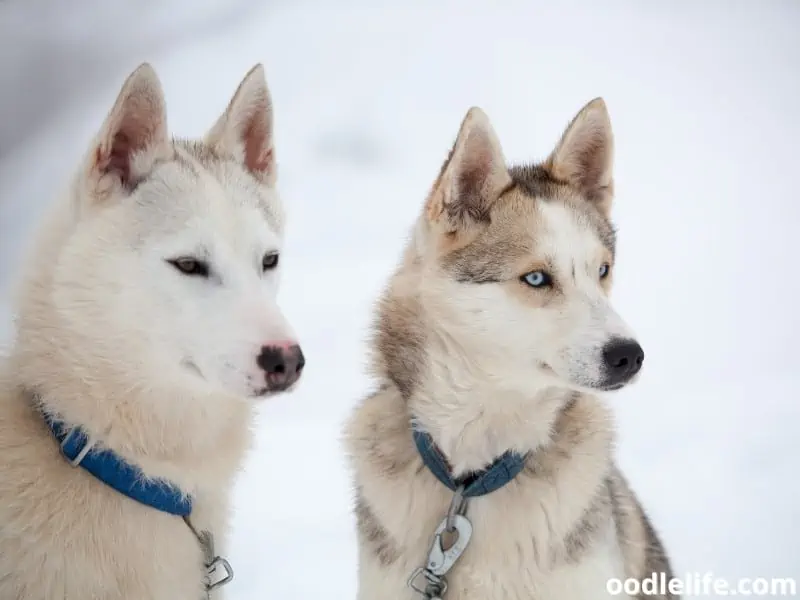
Health
Like other breeds of dogs, both are susceptible to certain health issues. Both dogs, for instance, like most dogs, are prone to progressive retinal atrophy, which leads to loss of sight, hypothyroidism, skin problems, and hereditary deafness.
One hereditary disease exclusive to Alaskan Huskies is Alaskan Husky Encephalopathy (AHE). It’s an Alaskan thing, hence it was named after them.
AHE is an incurable brain disease, common to Alaskan Huskies. It causes neurological issues that render them incapable of properly processing the thiamine they receive from food.

Conclusion
Having examined the differences and highlighted the similarities between the Alaskan and Siberian Huskies, it is more than clear that although both breeds are different in their own right, they are also very similar in some aspects. One might conclude that Alaskan and Siberian Huskies can generally be regarded as siblings from another mother.
We hope this helped inform your decision about which of the Huskies fits your lifestyle.